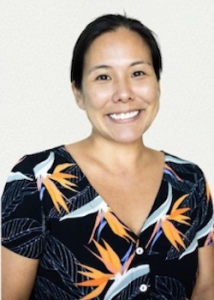
A team of researchers from the University of Hawaiʻi at Mānoa and University of California Riverside collaborated with Hawaiʻi Island schools to explore and develop strategies to prevent vape use among middle school students, with input from 69 students helping shape the prevention curriculum.

Researchers from UH Mānoa include the John A. Burns School of Medicine (JABSOM) Department of Native Hawaiian Health, UH Cancer Center and the Thompson School of Social Work & Public Health.
“The data on substance use, especially within Native Hawaiian and Pacific Islander youth, seem to suggest that the age at which prevention interventions are effective or most needed tends to be in middle school or even earlier,” said Kelsie Okamura, with JABSOM‘s Department of Native Hawaiian Health.
Okamura and the team took the project to Hawaiʻi Island middle schools and, through interviews or focus groups, got a first-hand glimpse into what middle schoolers encounter when it comes to the temptation to use vapes.
“It’s happening at the backyard paʻina. It’s with friends at the school bus stop, the gym, and the community center. Those are some of the scenarios we are hearing about,” Okamura said.
Resistance skills used by students
The research explores effective resistance skills middle school students use to avoid vaping. Key strategies include:
- Refuse: Firmly saying “no,” especially effective with strangers.
- Explain: Offering explanations or excuses, often used with friends.
- Avoid: Steering clear of places where vaping is common.
- Leave: Exiting situations where vaping offers occur, particularly when the offeror is not a close acquaintance.
The study may be eye-opening to parents, and the successful methods being used by middle schoolers will be built into the curriculum for Hoʻouna Pono, a culturally grounded substance use prevention program.
“You can really hear the student voices in this paper and I think that’s really important,” Okamura said. “We can include some of the resistance skills to help teachers build those skills in students and get practices and rehearsals in school.”

